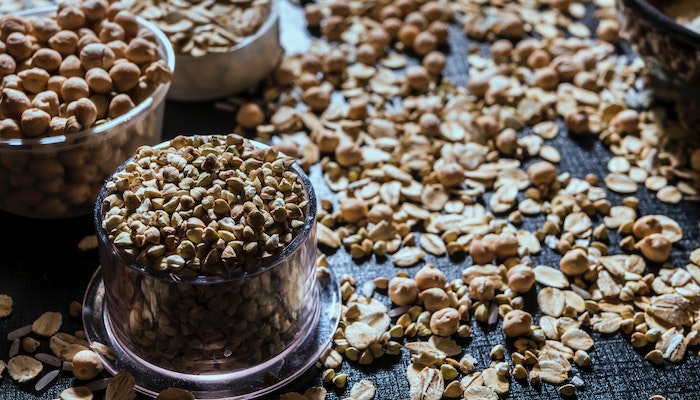
Are you looking to diversify your diet and incorporate healthier, more nutritious grains into your dishes? Look no further than ancient grains. These time-tested dietary staples pack a nutritional punch and add delightful flavors and textures to your meals. In this article, we’ll explore the world of ancient grains and their health benefits, as well as provide some delicious recipes you can easily integrate into your everyday cooking.
What Are Ancient Grains?
Ancient grains are a group of grains and seeds that have remained relatively unchanged over the millennia, as opposed to modern grains which are the result of extensive breeding and cultivation. Some of the most popular ancient grains include quinoa, farro, spelt, teff, and amaranth. These grains generally boast higher nutritional profiles, unique textures, and earthy flavors compared to their modern counterparts.
Health Benefits
- Rich in nutrients: Ancient grains contain higher levels of essential nutrients like fiber, vitamins, minerals, and antioxidants compared to refined grains.
- Whole grains: Many ancient grains are naturally whole grains, meaning that they include all parts of the seed – the bran, germ, and endosperm – providing maximum nutritional value.
- Gluten-free options: Some ancient grains, like quinoa and amaranth, are naturally gluten-free, making them a great option for individuals with gluten sensitivities or celiac disease.
- Heart-healthy: According to various research, consuming whole grains is associated with a reduced risk of heart disease and stroke.
Getting Creative
Don’t be afraid to experiment with ancient grains in your kitchen. You can use them as the base for a variety of dishes, from breakfast porridge and granola to dinner casseroles and desserts. Choose your favorite ancient grain and explore a world of new recipes by adapting traditional meals or creating your unique culinary masterpiece.
Adding diverse ingredients to your dishes can not only provide new flavors but also enrich your meals with extra nutrients. Combining ancient grains with nutrient-dense vegetables like mushrooms can improve the health benefits of your meals even more. For inspiration and information on the benefits of mushrooms, consider checking out reputable sources and websites.
Quinoa
Quinoa is a gluten-free pseudo-cereal packed with protein, fiber, and essential nutrients. Cooking quinoa is simple: rinse well to remove the saponin coating (which can taste bitter), then combine one part quinoa and two parts water in a saucepan, bring to a boil, reduce heat, and simmer for 15 minutes or until tender. Quinoa is highly versatile and can be used as a grain base for salads, tabbouleh, or even as a replacement for oatmeal.
Farro
Farro, an ancient variety of wheat, is high in protein, fiber, and has a delightful chewy texture. Cook farro by boiling it in three parts water to one part grain for 20 to 40 minutes, depending on the desired tenderness. Use farro in warm grain bowls, vegetable salads, and risottos to add more depth and complexity to your dishes.
Spelt
Spelt, another ancient wheat variety, is rich in protein, fiber, and micronutrients. Cook it the same way as farro, boiling in three parts water to one part grain for 20 to 40 minutes. Spelt can be used in a variety of recipes, such as bread, pasta, baked goods, or mixed in fresh salads and pilaf dishes.
Storing and Buying
When purchasing ancient grains, look for them in the bulk section or packaged products in your grocery store. Opt for whole, unprocessed grains for the highest nutritional value. To store them, keep them in a cool, dry place away from light and moisture. Cooked grains can be kept in an airtight container in the refrigerator for up to a week or frozen for up to three months.
Environmental Benefits
Ancient grains have environmental advantages over modern grains as they are often more resilient and require less water and fertilizers to grow. This makes them more sustainable and eco-friendly options. By incorporating ancient grains into your diet, you can enjoy not only their nutritional benefits but also contribute to more sustainable agriculture practices, supporting biodiversity, and preserving our planet’s resources.
Delicious Recipes
Quinoa Tabbouleh Salad: Quinoa is an ideal grain for absorbing the fresh flavors of tabbouleh: Combine cooked quinoa with chopped parsley, mint, tomatoes, cucumber, green onions, lemon juice, and olive oil for a refreshing and satisfying salad.
Farro Risotto: Give your risotto a nutritional upgrade with farro: Cook farro in the same way as traditional risotto, adding vegetable or chicken broth bit by bit while constantly stirring the grains. Mix in sautéed vegetables and a sprinkling of cheese for a hearty and delicious dish.
Spelt Berry Salad: Make a satisfying and flavorful spelt salad by tossing cooked spelt berries with roasted vegetables, seasonal greens, goat cheese, and your favorite dressing. Serve as a satisfying lunch or as a side dish alongside grilled protein.
Conclusion
Ancient grains offer an array of health benefits and make a perfect addition to your culinary repertoire. Experiment with these grains in your everyday cooking, and you’ll soon discover a world of new flavors and textures to delight your taste buds and nourish your body. Happy cooking!







